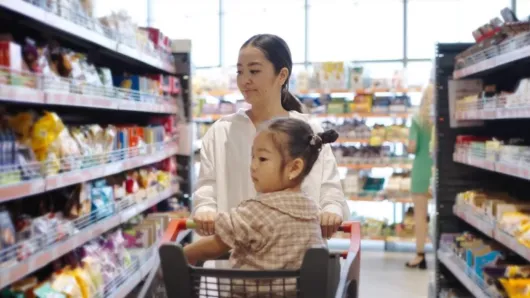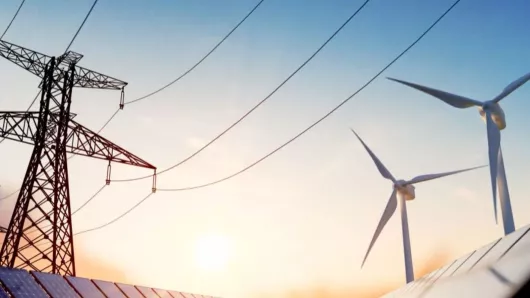Recycling sometimes takes the spotlight in the topic of sustainable packaging. And while recyclability of packaging and recycling are important, we know that recycling is not the only thing that matters when it comes to packaging considerations. The big picture, the spotlight we should be showcasing, is reducing our environmental footprint and recycling is just one of the many ways we reduce our environmental impacts.
Life Cycle Assessments (LCAs)
You can't manage what you can't measure, and one of the tools Sonoco uses to model our environmental impacts is life cycle assessments also known as LCA, which is the method of quantifying the resources taken from the environment and the emissions emitted to the environment within a very specific scope.
We use streamline life cycle assessment model to better understand our environmental impacts. When we evaluate a product's life cycle, we take a holistic picture rather than just focusing on end of life, every life cycle stage from cradle to grave is accounted for.
Product-Level Emissions
For example, this is a graph of a third party validated lifecycle assessment that Sonoco completed and it compares the environmental impacts of different can structures. There are two rigid paper cans, two plastic cans, and a glass jar all of the same volume. The graph illustrates the climate change impact and CO2 equivalent of different lifecycle stages of the cans.
Material impacts, which includes the production of raw material is cerulean blue and that makes up most of the impacts for the life cycle of the various cans. Production impacts of the packaging is the lightest blue color, and the end of life impacts are represented by the darkest blue color. When you average the climate change impacts at end of life across all the can structures end of life climate change impact makes up 6% of the total GHG can emissions. 6%, whereas raw material production releases 55% of the total GHG emissions.
That gives us a good idea of where we would want to focus our efforts if our goal was to make a more sustainable package. Reducing the weight of materials needed to produce a package or changing to a more sustainable material can often have a greater impact on GHG reduction then designing the package to be recycled at end of life.
Another example is the humble paperclip. Though they weigh only about five grams their life cycle still has an impact on the environment. Below is a graph representing the climate change of one paperclip. The orange bar is material impacts- the production of steel billet. The small pink bar is the production of the paperclip- the folding and bending of steel. And the end of life impacts from landfilling the paper clip is so small it's not even visible on the scale.
Landfilling a paperclip has less than 1% of its total life cycle impacts. Now does that mean we didn't care at all about recycling or material recovery? Absolutely not, but through tools like life cycle assessment, we can identify stages that have the greatest environmental impacts and work for improvement in those areas, which include but are not limited to recycling.
Corporate-Level Emissions
When we zoom out from emissions at the product level to emissions at the corporate level, we have many more emission sources to consider. From direct emissions and operations to emissions from employee travel and purchase goods and services. A corporation's greenhouse gas emission footprint stretches across the value chain and encompasses all upstream and downstream activities.
Through the efforts of ESG programs, companies have begun to monitor their emissions and to better tackle the problem. Those emissions have been divided into three different scopes- one two, and three. Let's talk through an example to understand the differences between the scope categories.
Let's use our paperclip as an example. If I am the paper clip producer, my scope one emissions could include things such as the admissions from the furnace melting process or fuel combustion and automobiles during transportation of raw materials. Then we also must consider any indirect emissions or scope two. Indirect emissions would be things like purchase electricity to power the facilities. We can even go further to consider our scope three admissions which includes all our upstream and downstream activities and emissions across the value chain. For example, the emissions associated with purchase goods and services, use of sold products, waste generated and operations, and end-of-life treatment of sold products.
Tracking scope three emissions is important. According to carbon disclosure project, scope three emissions represent more than 40% of a company's overall emissions, but based on a 2019 study when surveying over 35,000 companies that reported scope three emissions, CDP found that the emissions reported for end-of-life treatment of their products was less than 1% of the total scope three emissions reported.
The majority of emissions came from the use of sold products and purchased goods and services. This shows that we must think about a lot more than just designing for end of life. Why is that? If we only focus on designing products to be recyclable will miss out on other opportunities to impact our other scope emissions effectively.
Conclusion
Being effective environmental stewards means seeing the full picture and taking decided action. Recycling is an important part of increasing material circularity, and without recycling we wouldn't have recycled content. It matters, but it's just a part of the puzzle that makes a corporation sustainable. And that's this episode of sustainability unpacked.


